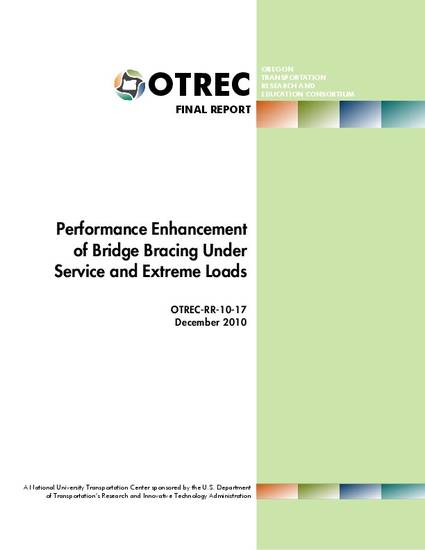
- Traffic safety -- Oregon,
- Bridges -- Safety measures,
- Bridges -- Design and construction -- Standards -- United States
As truck loads continue to get bigger, the demand on many aging bridges increases. Slender steel structural elements widely used in bridge superstructures and braced substructures to resist these loads are built primarily for tension, however, and can buckle under compressive loads. Portland State University associate professor Peter Dusicka set out to develop and demonstrate the concept of retrofitting bridge brace elements with fiber reinforced composites in order to provide restraint against buckling. The advanced materials consisted of a combination of fiber reinforced polymer (FRP) composite pultruded sections and wet lay-up wraps intended to be applied in the field. This exploratory study shows that retrofitting slender bracing members retrofitted with FRP sections improves performance. All retrofitted specimens showed an improved compressive strength in the linear elastic and plastic deformation range of the slender bracing member. The cyclic behavior exhibited only a marginal improvement, however, due to failure modes at the bolted connections of the brace; modifying the brace only slightly improved the cyclic performance. Despite the connection failures of the retrofitted members, the demonstration shows that the developed concept of applying fiber reinforced composites can keep slender bracing members from buckling and improve the compressive resistance. Further testing needs to be conducted to evaluate a better implementation to resist cyclic loads.

This is a final report, OTREC-RR-10-17, from the NITC program of TREC at Portland State University, and can be found online at:
http://nitc.trec.pdx.edu/research/project/53